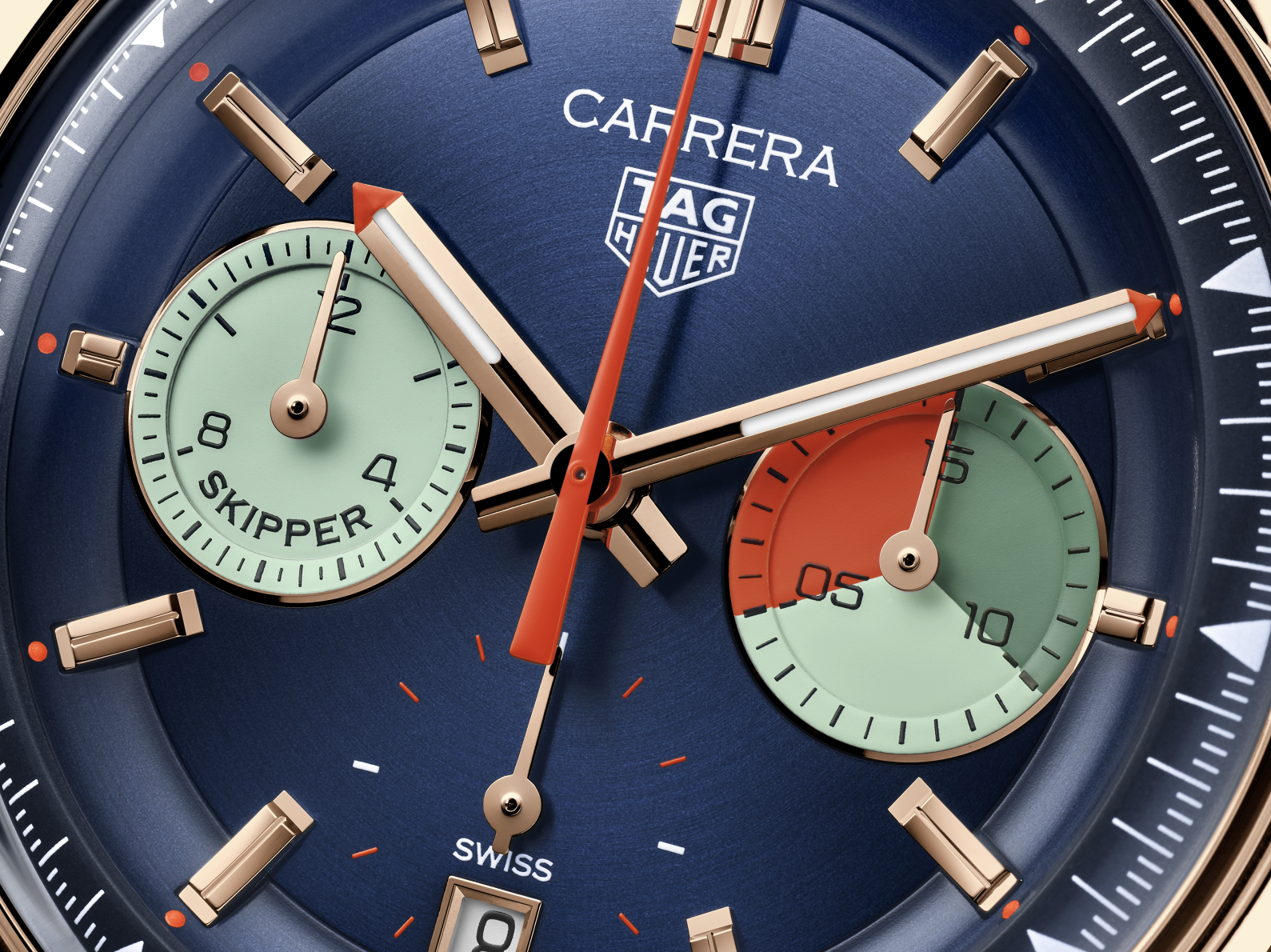The Watchmaker’s Canvas
In the rarified world of haute horlogerie, where decimal tolerances speak of engineering precision and tourbillons pirouette with celestial grace, there lies a surface no thicker than a coin but deeper than a sonnet: the watch dial. While movements often garner the loudest applause, it is on the dial that imagination, identity, and artistry converge.
Dial artistry is not mere ornamentation; it is a deliberate canvas, a miniature theatre of craftsmanship. It serves not only to inform, but to seduce, provoke and sometimes to play. Today, traditional techniques like cloisonne enamel, miniature painting and guilloche coexist with contemporary innovations such as laser engraving, 3D printing and even augmented reality.
These hybrid approaches allow artisans to experiment with depth, interactivity and narrative in ways previously unimaginable — pushing the dial into new realms of artistic and sensory experience. In the following paragraph, we will turn our attention to eight extraordinary maisons whose work exemplifies wonderful possibilities of creative expression on the faces of timepieces.
Patek Philippe
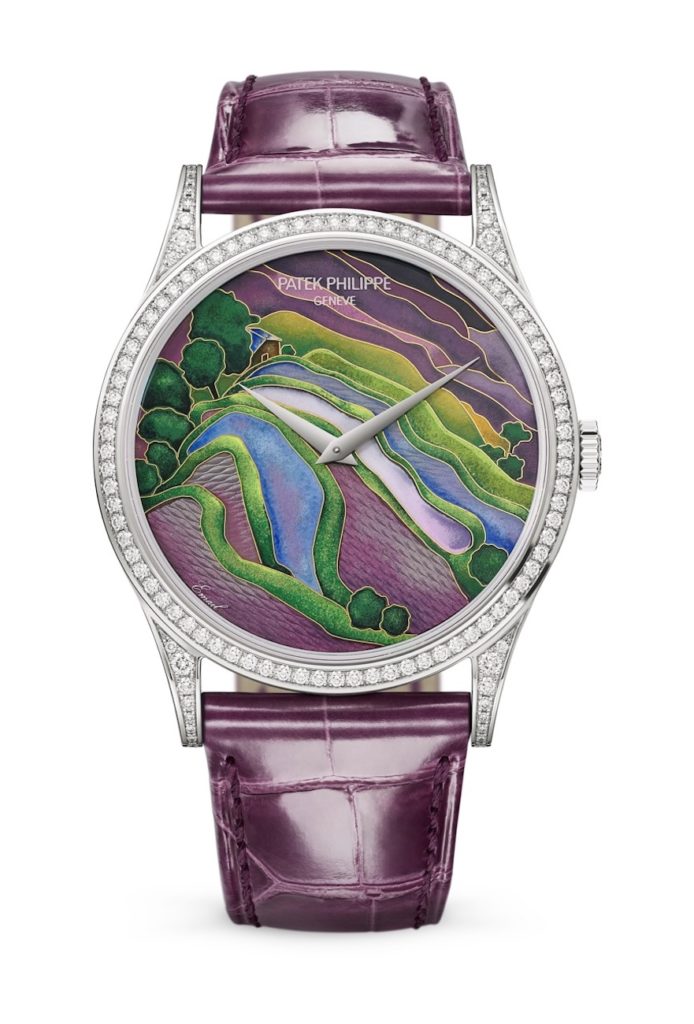
Let us begin at the summit—with Patek Philippe, a maison that has long held a religious devotion to metiers d’art. Here, dial artistry is not a trend, but a calling, rooted in an ethos that prizes time-honoured techniques as deeply as it does innovation. The 2025 Rare Handcrafts collection continues this tradition with remarkable pieces like the Golden Ellipse Ref. 5738/50J-011 “Yellow-Crested Cockatoo”, featuring a cloisonne enamel dial enhanced by a miniature painting that brings the vibrant bird to life in exquisite detail. It is not simply decorative—it is narrative.
Equally mesmerizing is the Calatrava Ref. 5077/100R-071 “White Swan,” whose dial is crafted from rare species of wood marquetry and finished with delicate gold leaf. Each thin slice of wood is chosen for its grain, tone, and pliability, then hand-cut and assembled like a jigsaw puzzle of tone and texture. This level of detail—sometimes involving over 200 pieces per dial—requires not just skill but patience bordering on the monastic. The result is not merely visual, but tactile, drawing the eye into its layered intricacies with each glance.
Yet, Patek Philippe’s dial artistry extends far beyond métiers d’art alone, blending seamlessly with high complications. In the Ref. 5370R-001 Split-Seconds Chronograph, introduced in 2025, design and engineering unite harmoniously. The brown Grand Feu enamel dial, with beige champlevé enamel subdials and a tachymeter scale, showcases Patek’ Philippe’s ability to balance technical sophistication with aesthetic refinement. Here, symmetry, legibility, and elegance are not mere preferences; they are obligations. The dial becomes a stage where every complication plays its part in balance and proportion, where function enhances form rather than burdens it.
Van Cleef & Arpels
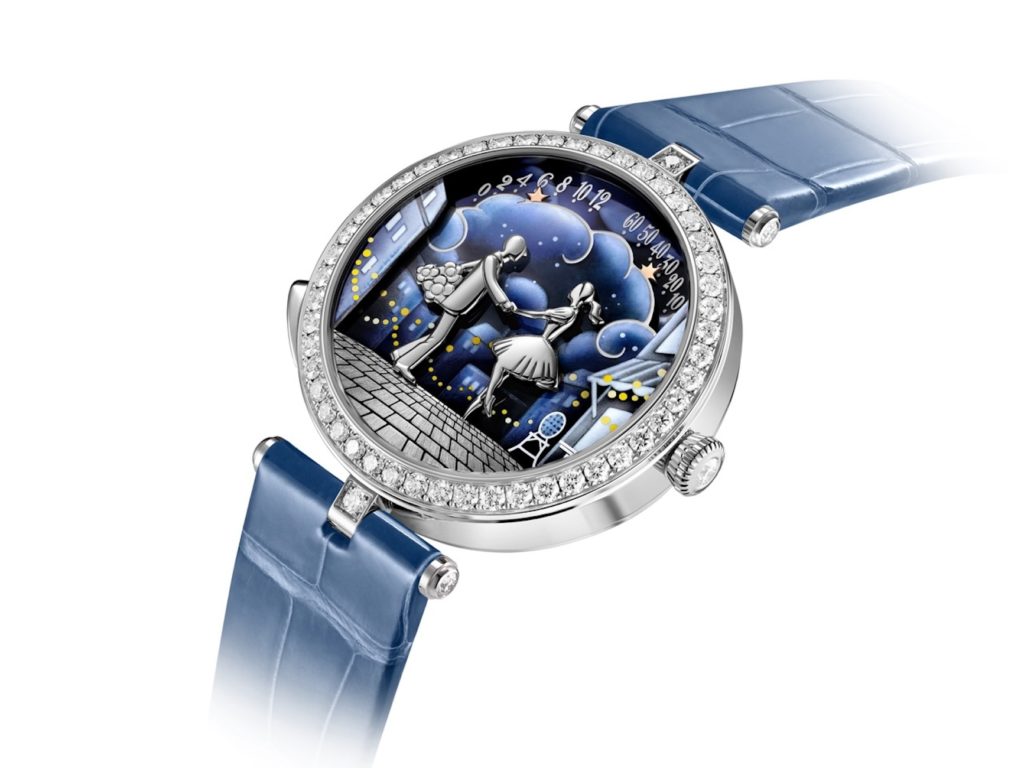
Next, we move to a maison where time is measured not in seconds, but in stories: Van Cleef & Arpels. Few watchmakers elevate narrative like this one, and their 2025 presentation at Watches & Wonders reaffirmed their mastery of emotional storytelling through mechanical ingenuity. The Lady Arpels Bal des Amoureux Automate, a sublime expression of the maison’s Poetic Complications, features a romantic scene in white gold, adorned with diamonds and miniature sculpture. At noon and midnight, an automaton mechanism animates the scene, bringing the lovers to life as they glide toward each other for a tender kiss.
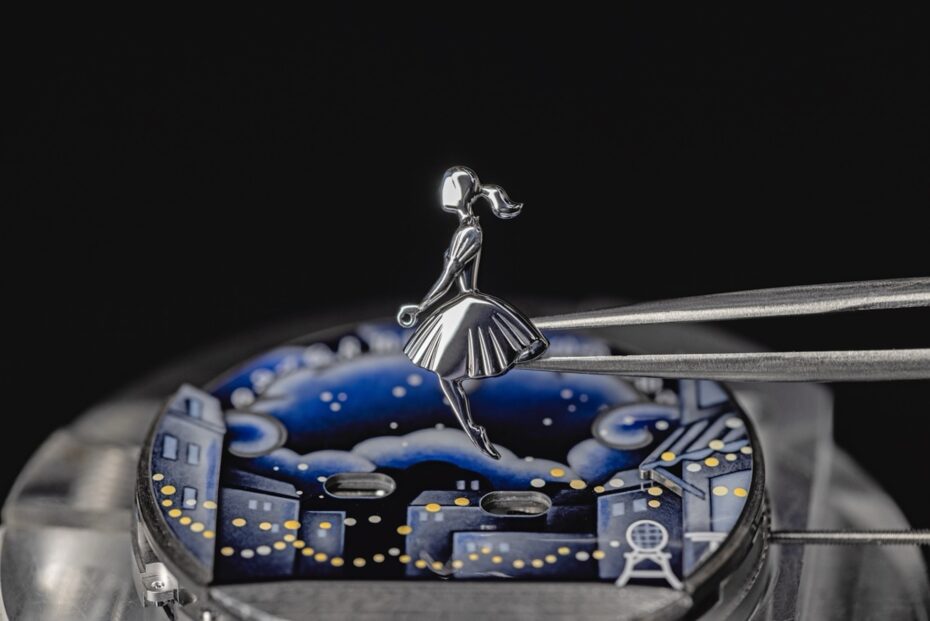
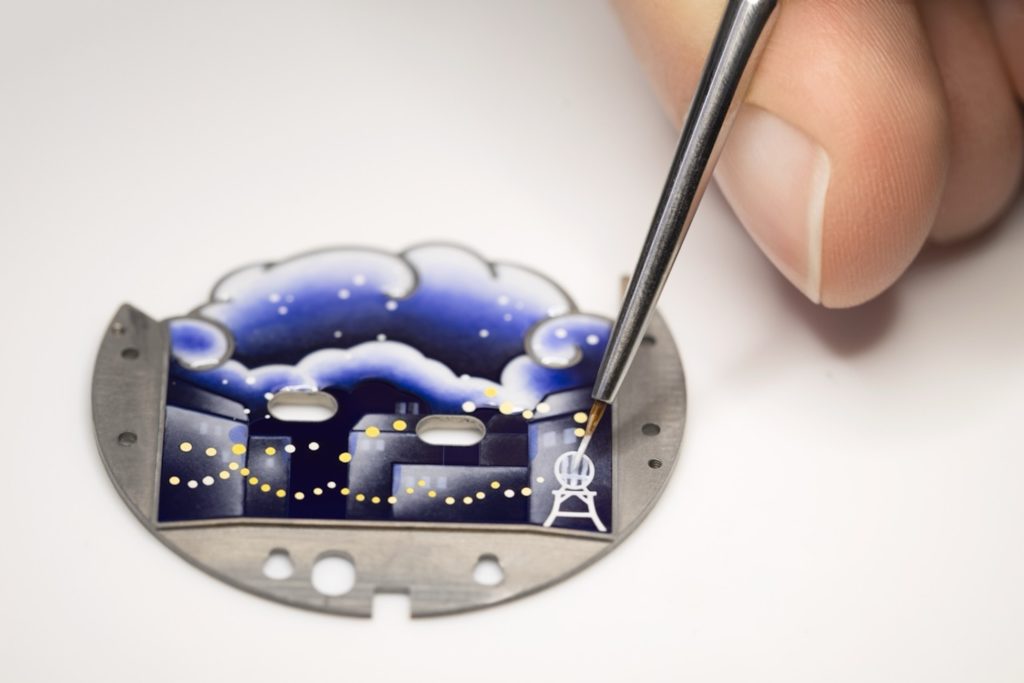
The dial’s intricate design incorporates five planes for added depth, with grisaille enamelling evoking a starlit night and delicate brushwork capturing folds of fabric and expressions of longing. Time is told by two stars set in motion via a double retrograde system, blending technical sophistication with poetic artistry. Here, mechanics are not concealed, they are staged, choreographed, and emotionally resonant. The timepiece is, in fact, a continuation of the animation depicted on the dial of the Lady Arpels Pont des Amoureux, which was first introduced in 2010.
Alongside this, the maison’s Extraordinary Dials series continues to showcase its virtuosity in métiers d’art. Previous years have featured butterflies in miniature mosaic and dreamy zodiac scenes in plique-à-jour enamel. Even in the restrained elegance of the Pierre Arpels collection, where minimalism reigns, the dial remains a sacred space, empty not from absence, but from intention. It is designed as a pause, the white space of a poem, the silence between notes in a sonata.
Chanel
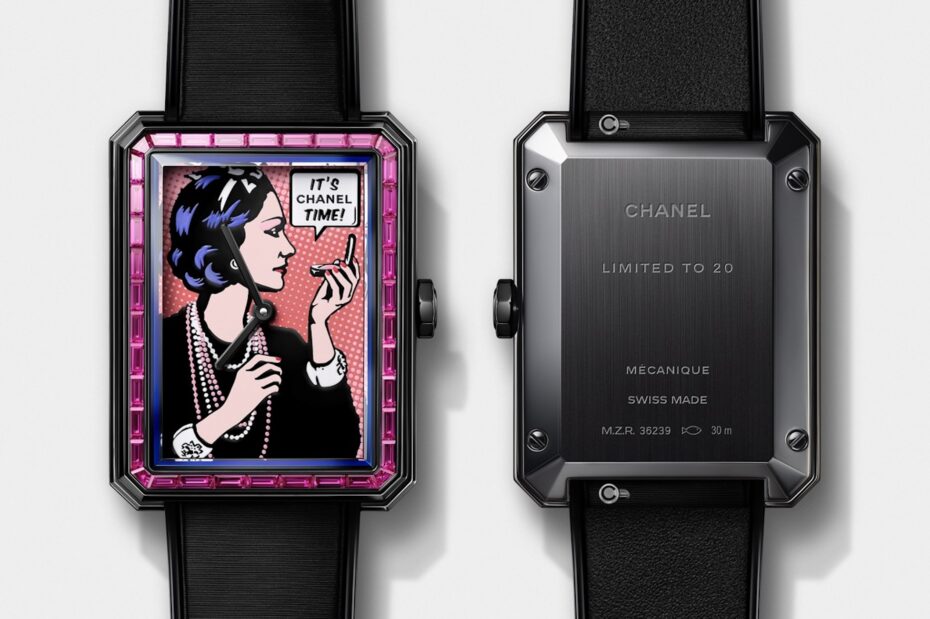
From fairy tales to fashion rebels, Chanel brings its haute couture swagger to the dial with irrepressible confidence. The house’s design language—bold yet elegant, masculine but never without grace—finds its gorological counterpoint in models like the Boy.Friend.Originally conceived as a study in masculine lines for a feminine wrist, it has now become a playground for dial experimentation.
A standout is the 2024 piece unique created for the TimeForArt auction: a Pop Art-style portrait of Gabrielle Chanel herself, clad in pearls, layered necklaces and bold cuffs, framed within a bezel of 38-baguette-cut diamonds. Crafted in Grand Feu Studio, the image is built up using twelve individual cliches, dimensionality, with texture, wit and irreverent charm.
In 2025, Chanel continues this exploration with Boy.Friend Coco Art Watch, a reissue of the 2024 piece, unique as a limited edition of 20 pieces, this time framed with a bezel of 38 baguette-cut pink sapphires. Chanel also introduced the Boy.Friend Blush at Watches & Wonders 2025. This limited-edition timepiece features a coral lacquer dial adorned with a stylised portrait of Gabrielle Chanel, paired with a pink strap and a black stainless-steel case.
The contrasting hues, slightly off-killer symmetry and expressive line work echo Chanel’s radical take on femininity. Chanel’s dial experimentation is neither nostalgic nor tech-forward: it is artistic expression in the medium of time; fashion rendered in horological form.
Hermès
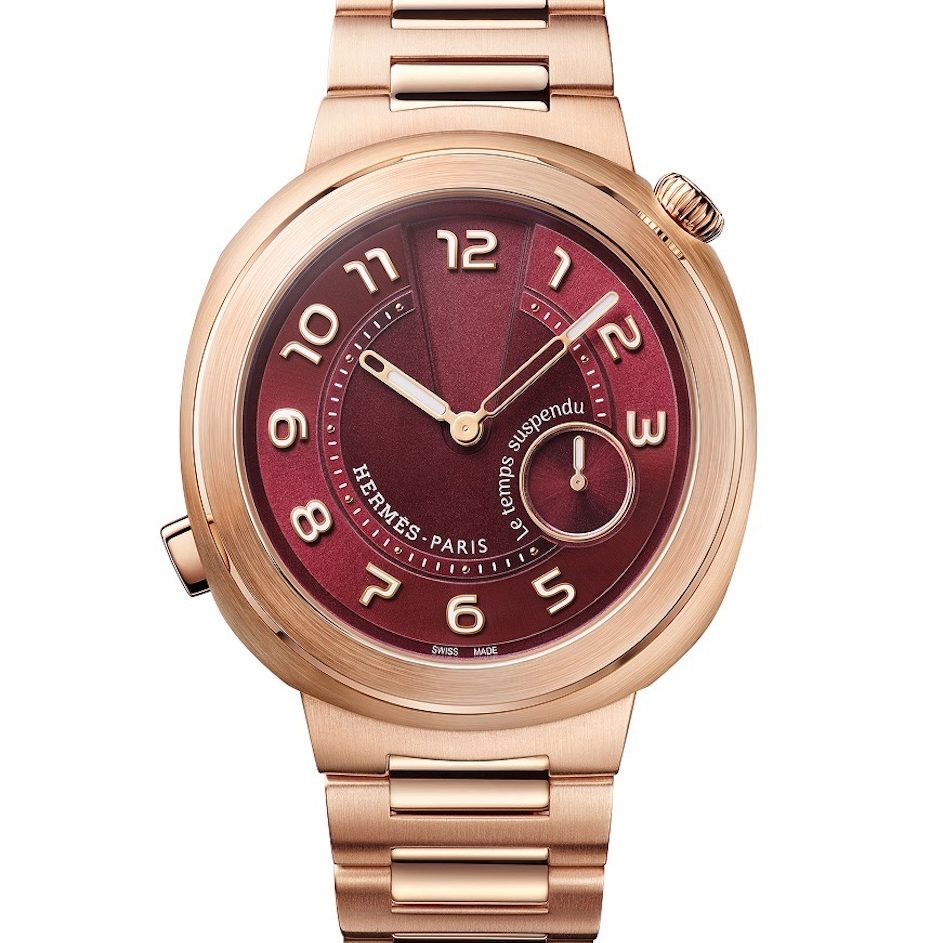
Dial artistry often speaks most potently when it whispers, and few speak this dialect more fluently than Hermès. Revered for its leather and scarves, the maison has now turned its horological eye inward, and upward. The Arceau collection, long celebrated for its asymmetrical stirrup-shaped lugs and narrative-driven dials, epitomizes this approach.
The Arceau Le Temps Suspendu, returning in 2025, invites you to pause time itself, literally. At the press of a pusher, the hands retreat, leaving time to quietly continue inside while refraining from declaring it. The dial becomes an existential pause, a philosophical gesture cloaked in horological mastery. It is a reminder that time, like language, can be withheld, held in suspense, or gently subverted.
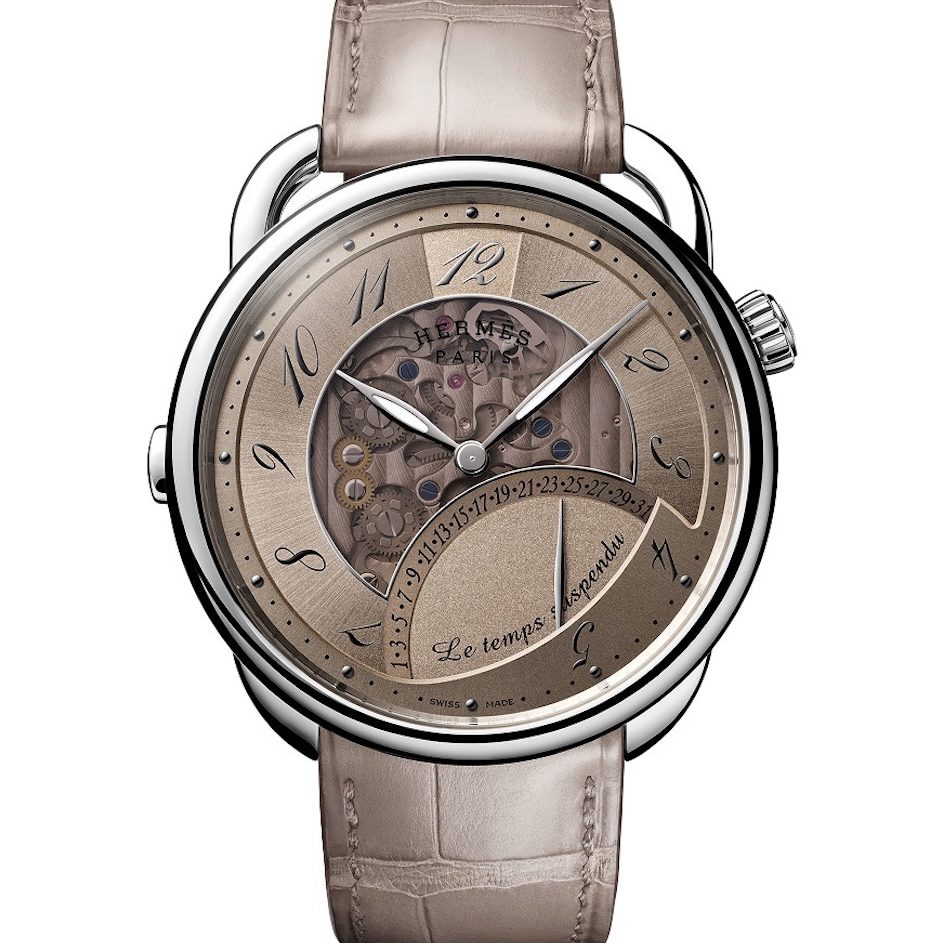
Then, there’s the Arceau Rocabar de Rire, which replaces solemnity with mirth. A horse crafted from horsehair marquetry, engraving, and miniature painting sits on the dial, with the punchline arriving when the horse sticks out its tongue at the press of a pusher. It is playful, delightful, and exquisitely made. It reminds us that technical mastery and a sense of humor are not mutually exclusive.
Hermès has long embraced playfulness with discipline. Even in pieces like the Arceau Millefiori—where the dial is a slab of colored glass crafted in the Cristalleries de Saint-Louis—or the lacquered scenes inspired by its scarf designs, the maison demonstrates that dial artistry can be both poetic and whimsical, a quiet rebellion dressed in elegance.
Longines
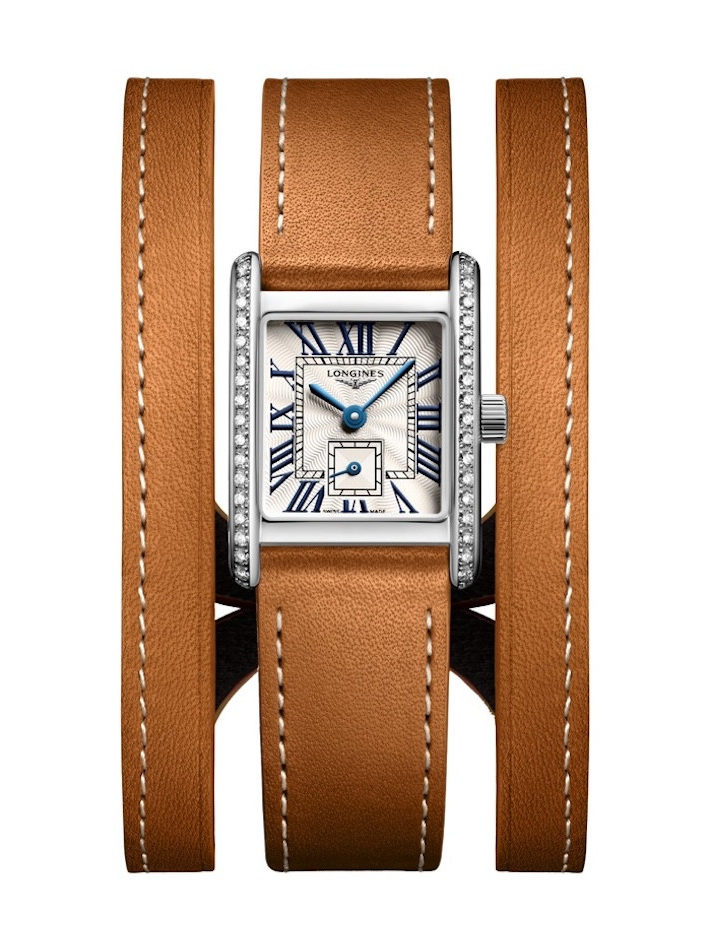
Longines proves that artistry needn’t always be ornate. Take for instance, the brand’s famed sector dials, which are studies in proportion and clarity, designs that whisper rather than shout, yet command attention with their perfect geometry. In these dials, symmetry reigns: concentric circles, crisp crosshairs, and evenly spaced markers create a visual rhythm that recalls interwar modernism and mid-century minimalism.
Contemporary releases like the Heritage Classic Sector Dial and the rectangular DolceVita Sector Dial have garnered praise not for their complexity but for their restraint. The spacing of elements, the serif typefaces, the muted palettes, all recall a time when utility and beauty were not in conflict but in conversation.
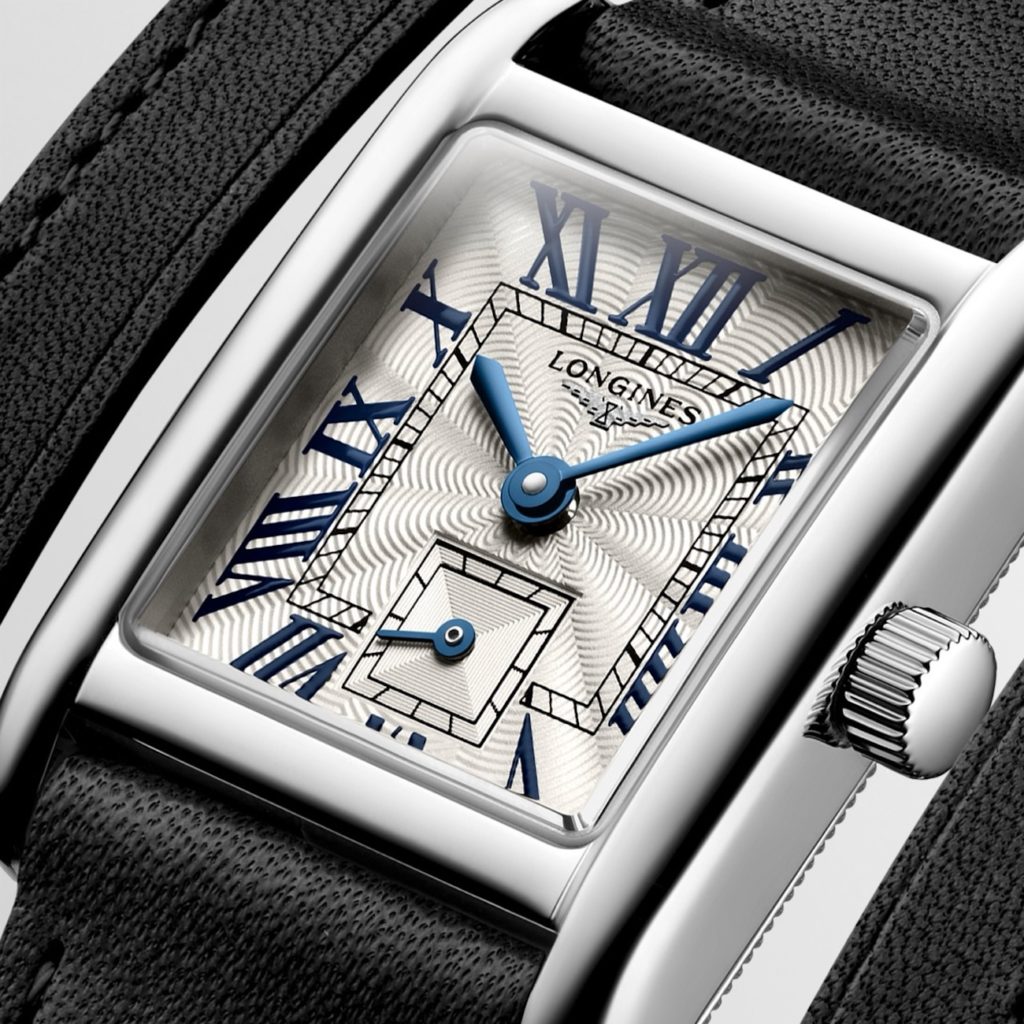
This restrained elegance permeates the broader catalogue. From the balanced typography of the Master Collection to the disciplined legibility of the Spirit line, and even in the sportier HydroConquest models, Longines consistently favours proportion over embellishment. It is a quiet, deliberate aesthetic, one that values design discipline as a form of artistry. The dial becomes a diagram of clarity, a design of timeless relevance.
Bvlgari
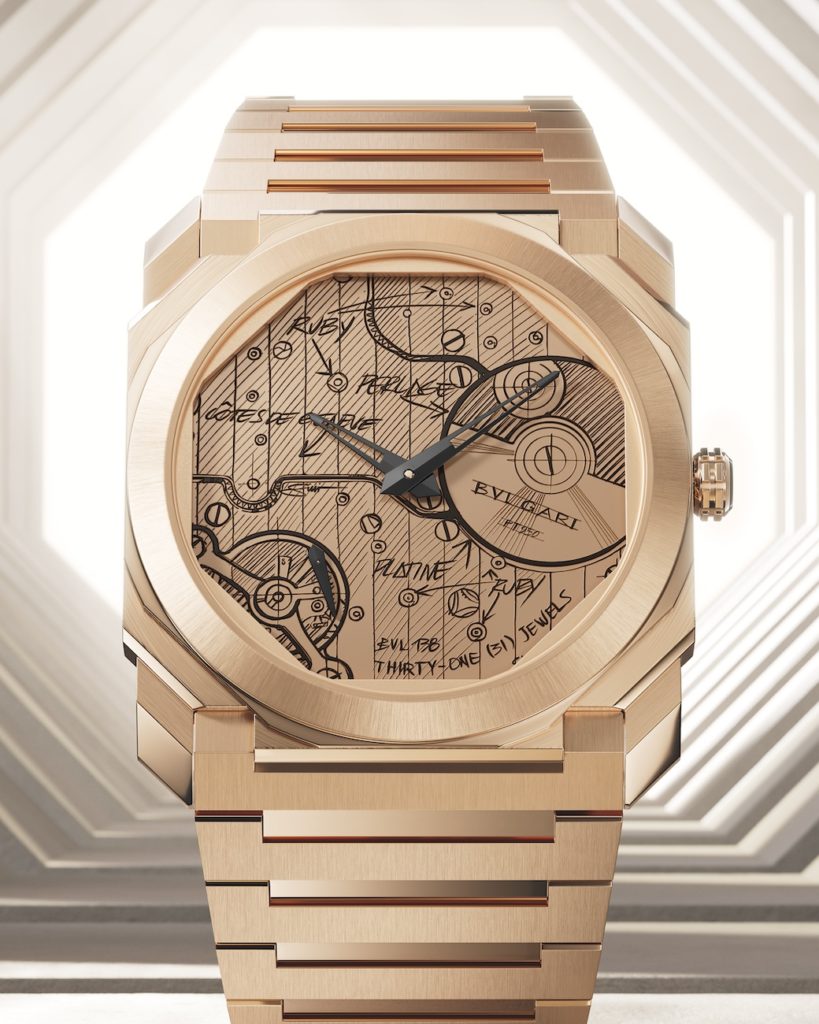
Bvlgari, master of Roman sensuality, offers a different proposition altogether. Its approach to dial artistry is all at once conceptual and sensual, merging engineering and aesthetic daring. In celebration of its 140th anniversary, the brand unveiled the Octo Finissimo Automatic Sketch Dial, a limited edition that places the movement front and centre on the dial.
The face features a hand-drawn illustration of the ultra-thin calibre BVL 138, complete with its micro-rotor and intricate finishing details. This layered, expressive depiction blends mechanical complexity with artistic imagination. Made available in 280 pieces in stainless steel and 70 in 18k rose gold, the timepiece underscores Bvlgari’s commitment to challenging horological conventions with elegant disregard.
This sketch-style approach first emerged in 2022, when Bvlgari’s creative director, Fabrizio Buonamassa Stigliani, printed his original design drawings directly onto the dial. By elevating what is normally a backstage process into the star of the show, Bvlgari upends the hierarchy of watch design. It is meta, mechanical, and unmistakably Roman in its flair. This approach offers a rare glimpse into the design process and celebrates the generative power of sketching—the first line before anything else exists, now frozen forever on the dial.
H. Moser & Cie
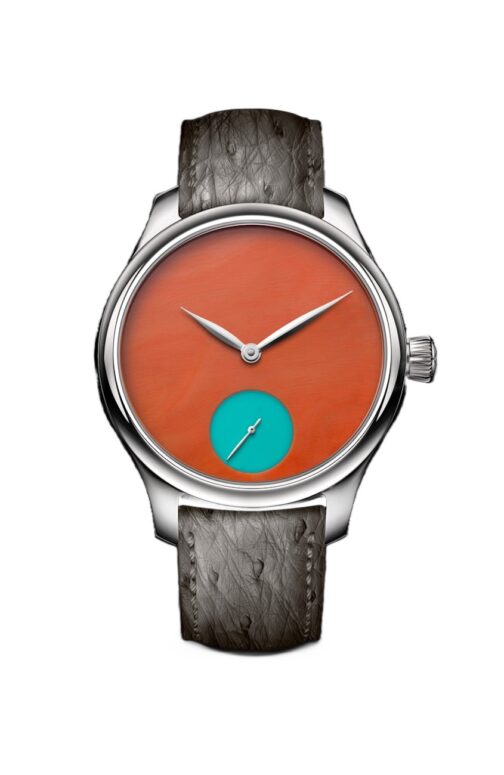
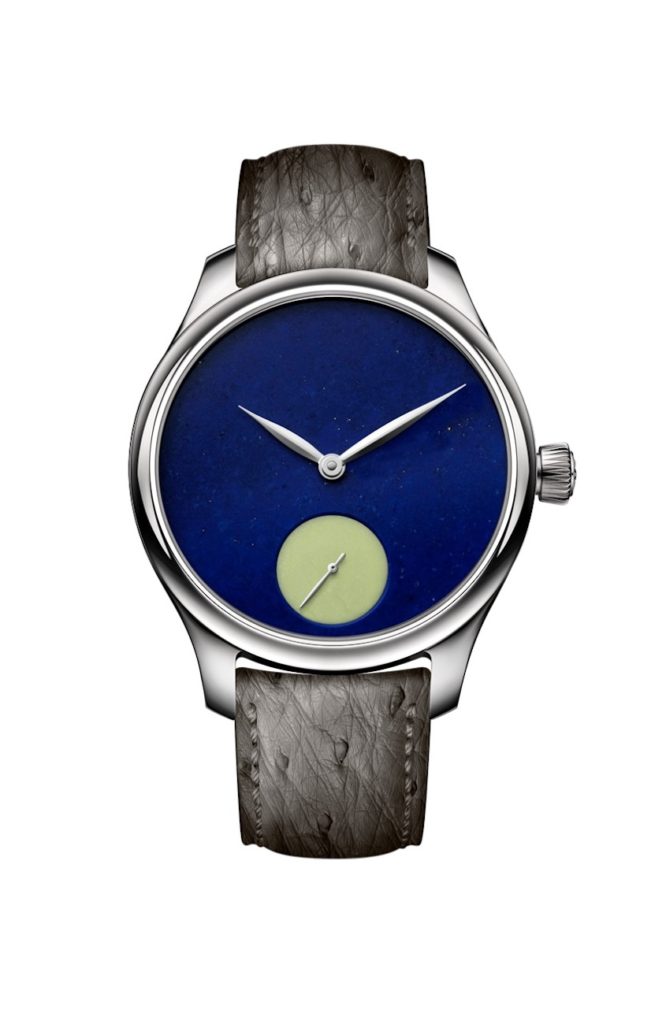
Meanwhile, in Schaffhausen, H. Moser & Cie dares to scribble all over tradition—challenging the codes of classic watchmaking like none before. Nowhere is this more apparent than in the Endeavour Perpetual Calendar Tutorial. This limited edition takes the brand’s revered perpetual calendar and overlays it with scribbled annotations, doodles, and playful reminders as if written by a mischievous watchmaker.
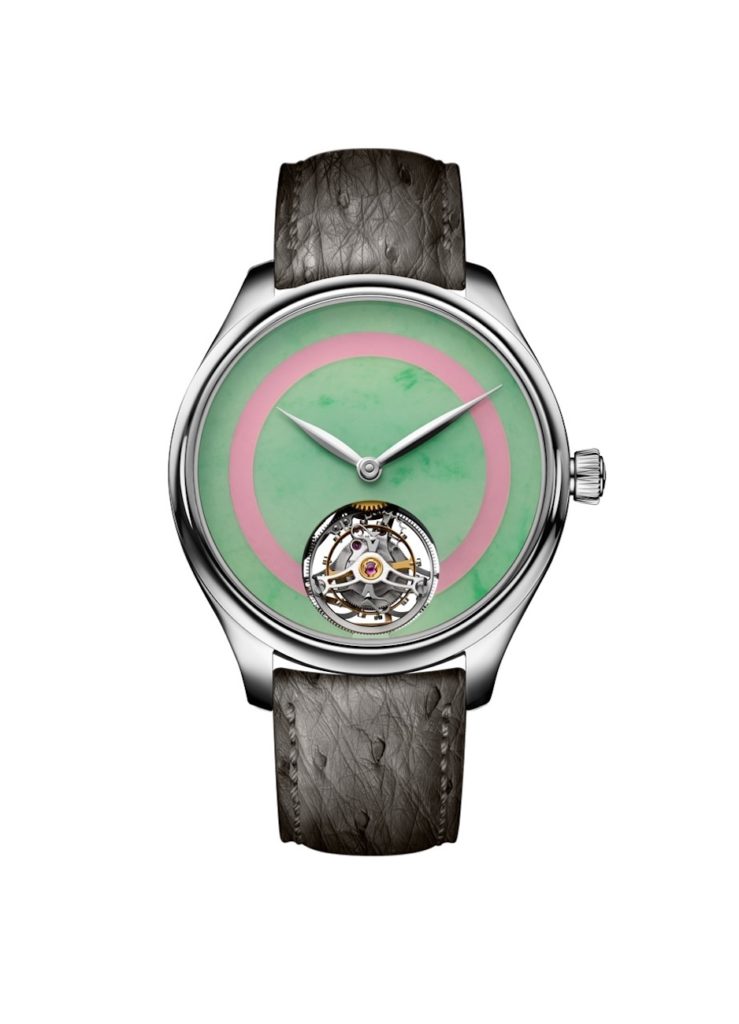
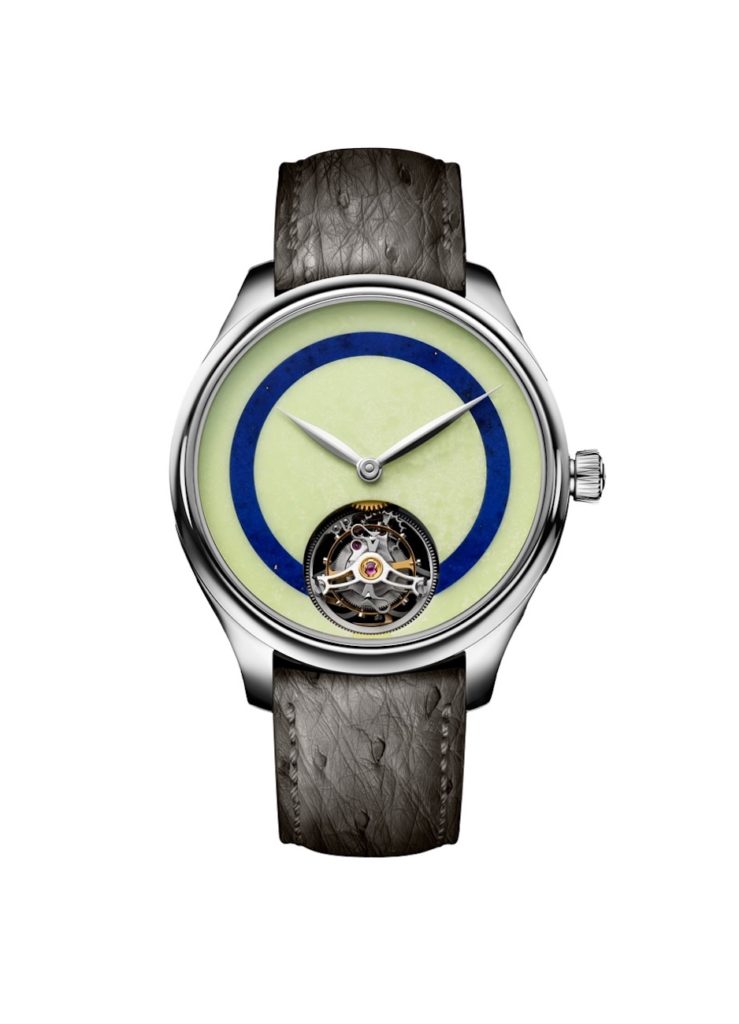
With cheeky notes like “Watch out for very rare 29th” next to the month of February, the dial transforms into living breathing user manual. And yet, the mechanism beneath remains uncompromising: instantaneous date change, manual override, and minimalist architecture all powered by the HMC 800 calibre. Moser’s point is clear: serious watchmaking doesn’t have to take itself too seriously.
This spirit of rebellion is also reflected in Moser’s 2025 Pop Collection: a riot of colour and natural materials that reimagines the Endeavour line. Dials crafted from turquoise, coral, jade, and lapis lazuli present a vivid, almost surreal intensity. Each stone dial is unique, offering an artistic expression of nature’s imperfections, while still maintaining Moser’s commitment to technical integrity. Here, nature becomes the artist, and the dial the medium.
Mido
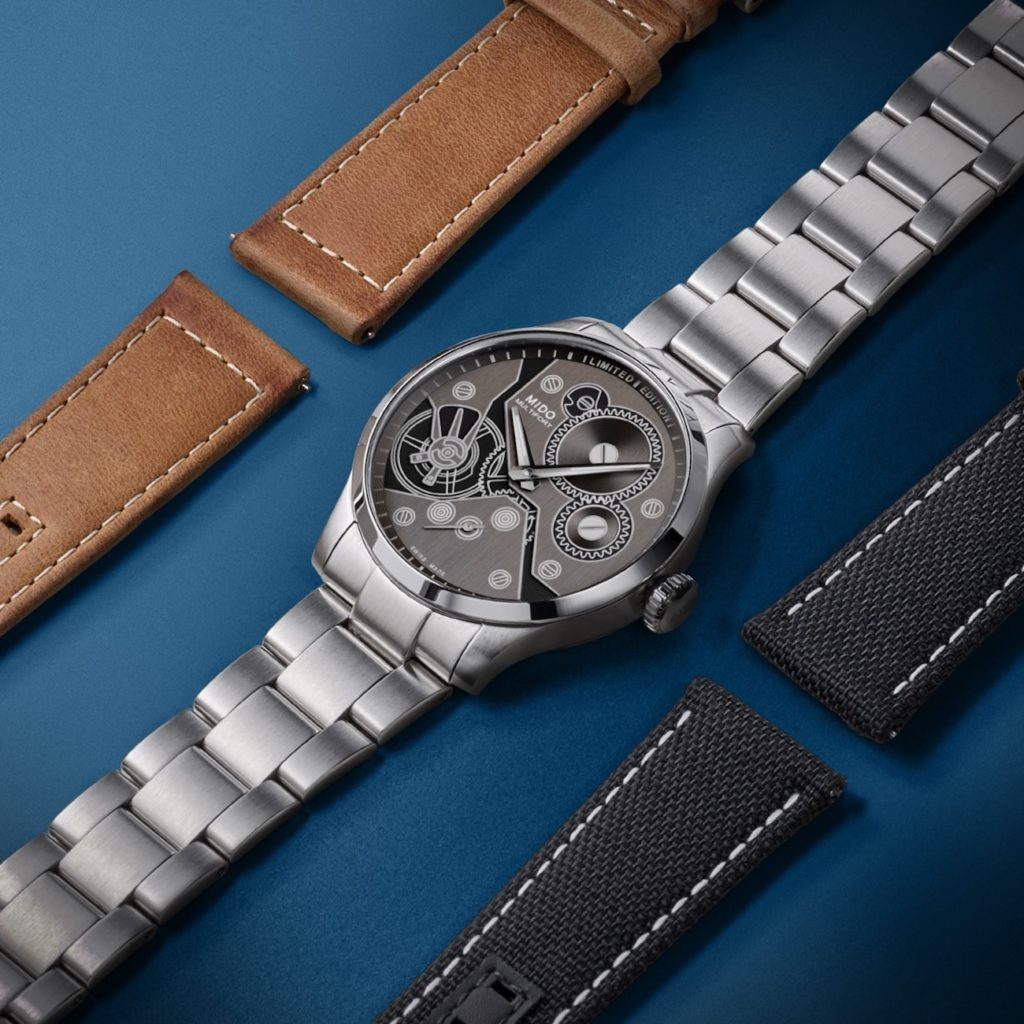
Mido, the quiet achiever of Swiss watchmaking, is carving out a unique space by reimagining mechanical design with artistic clarity. While the brand favours architectural rigor over ornamentation, its recent foray into dial artistry has been both clever and refreshing. The Multifort Mechanical, introduced in 2024, features a printed illustration of the movement across its dial.
Mido cheekily turns the mechanics inside out, placing a schematic drawing of the calibre front and centre, treated with luminescent material for a glow-in-the-dark effect. The result is cerebral yet charming, a visual homage to the machine within, rendered with graphic finesse.
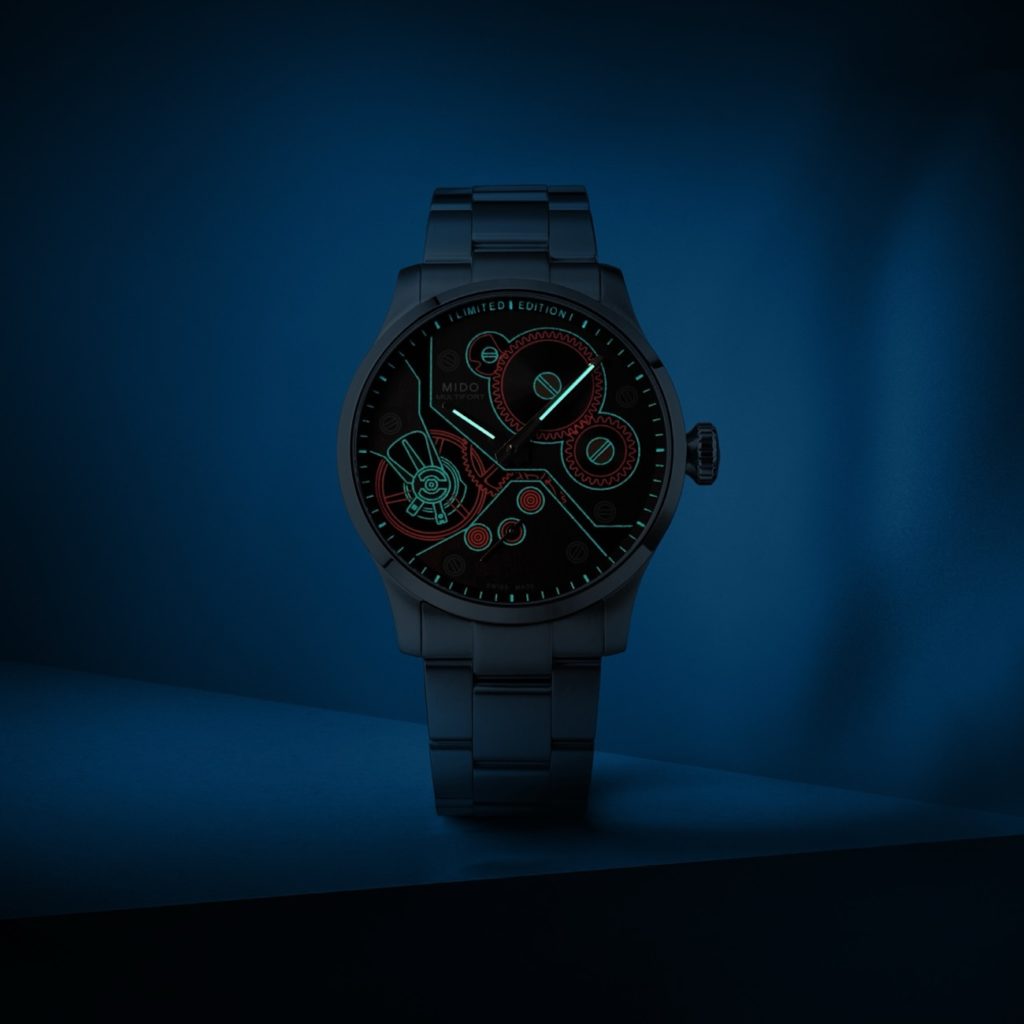
And in other lines, such as the Ocean Star Decompression Timer or Commander Gradient, Mido balances colour, transparency, and playful geometry with surprising dexterity. It is not showy but assured. It proves that even in the affordable segment, dial artistry can sing with both intelligence and integrity. The art is democratic, the detail precise, the joy unmistakable.
In a world where time is often reduced to a mechanical abstraction, these eight maisons demonstrate the elevation of the dial to its rightful place as an art form. Each dial considered above represents not merely a functional surface, but a synthesis of heritage and experimentation—a miniature gallery where history, philosophy, and innovation converge. Whether it’s the precision of wood marquetry, the storytelling of automata, or the unexpected poetry of laser etching or graphic schematics, the dial has become a space where the past and future of watchmaking hold a quiet, exquisite dialogue. These timepieces remind us that a watch does more than tell time; it frames it, questions it, decorates it—and, most importantly, reimagines it.

